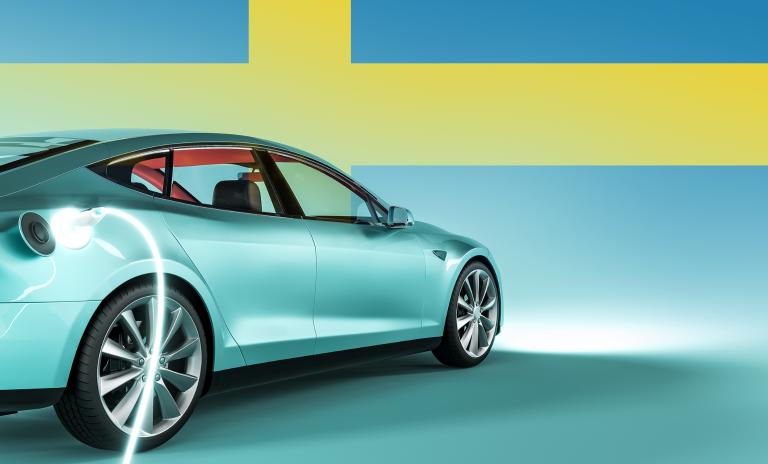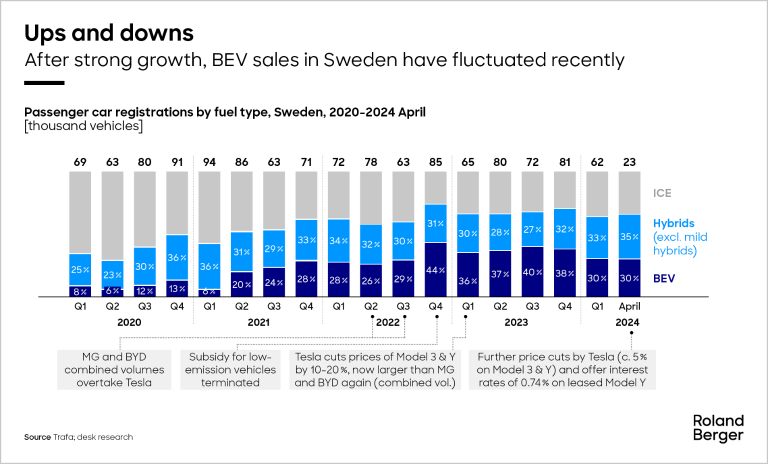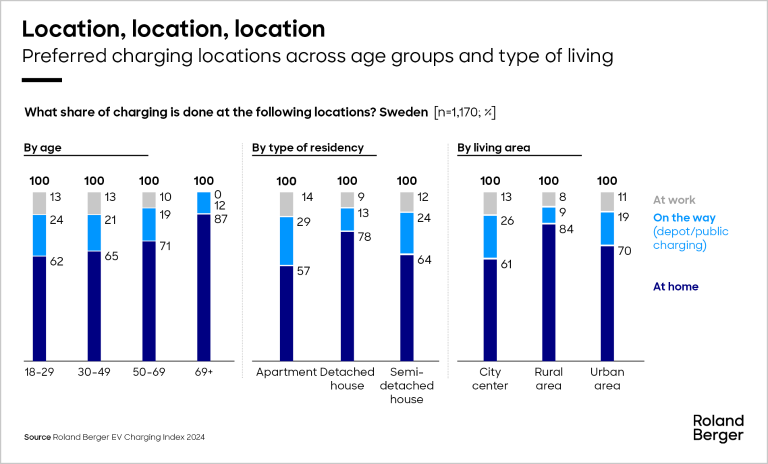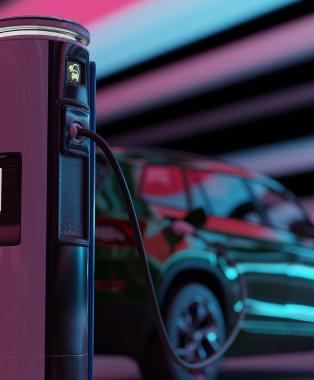The electric vehicle and EV charging market enjoyed a surge in late 2022 despite continued high energy prices.


EV Charging Index: Expert insight from Sweden
E-mobility is well established in Sweden, but more focus is required on its fast-charging network
Sweden remains a world leader in EV sales, although growth has slowed. Its public charging infrastructure is growing quickly but struggling to keep up with the country’s large EV parc. The number of DC chargers is well below average and must be addressed.

"Sweden saw strong growth in its public charging infrastructure during 2023, although its public charging sufficiency remains just below average."
Fluctuations in EV sales growth
EV adoption in Sweden is at record levels, with almost two thirds of cars sold in 2023 either fully electric or a plug-in hybrid. Approximately 12% of the country’s car parc is now electric.
However, in 2024, things have changed somewhat. In Q1, the BEV sales penetration rate decreased to 30%, with 18,700 vehicles sold. This is down from the record level of 44% in Q4 2022 and almost 5,000 fewer vehicles than Q1 2023.
There are numerous factors behind these recent changes. At the end of 2022, the government ended its subsidy program for low-emission vehicles, which generated a significant boost for EV sales in Q4 2022.
At the same time, Chinese OEMs such as MG and BYD began to increase their sales in Sweden thanks to lower-priced models. In response, Tesla, the market leader, has significantly lowered its prices for two consecutive years. This strategy has led to Tesla regaining its market share butcaused greater uncertainty among consumers as to how these price changes might affect the residual value of their vehicles.
Despite these developments, Sweden is committed to EV adoption, driven by its 2045 net-zero ambition, EU's planned ban on ICE vehicles sales by 2035 and its own planned ban by 2030. One of its main OEMs, Volvo, has already stopped selling “only ICE” vehicles in Sweden, for instance.
Public charging network must continue to grow
Sweden saw strong growth in its public charging infrastructure during 2023 (78%), although its overall public charging sufficiency remains just below average compared to other European countries. This is partly due to the large size of Sweden’s EV parc, which demonstrates strong demand for e-mobility and the need for continued charger rollout. The percentage of DC chargers in Sweden’s public charging network (9%) is well below average.
Private owners and organizations can still apply for a subsidy when installing a home or workplace charger, amounting to 50% of the costs, up to a maximum of SEK 15,000. There are also subsidies available to public charge point operators.
Charging behavior becomes more diversified
Our survey highlighted several trends within charging behavior. As EV adoption has grown, the user demographic has shifted. There is now a greater number of younger, urban-based EV users across different income brackets, who are more likely to live in apartments and rely on public charging facilities. Meanwhile, older, retired users who no longer have the option to charge at work are more reliant on home charging.
The type of charging facility used most frequently also varies by age. EV drivers aged 50 plus tend to favor destination and highway charging; younger users are more flexible, with a slight preference towards parking lots, retail stores, and workplace charging.
For charge point operators (CPOs), this confirms the importance of tailoring both their offering and their marketing approaches to appeal to certain customer segments.
CPOs looking to innovate
While scaling their networks, CPOs are also experimenting with new revenue streams. Scandinavian firm Recharge announced that it plans to launch pilot projects in partnership with Sparkion, an energy management company, to transform selected charging stations into small-scale, battery-driven power plants. The stations will offer flexible energy management services to local grid operators and generate their own electricity via photovoltaic panels, which could help balance the grid.
Register now to to discover the latest insights, emerging trends and upcoming challenges in the EV and EV charging markets.









